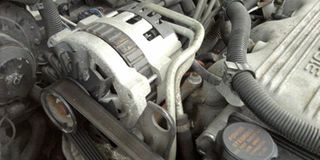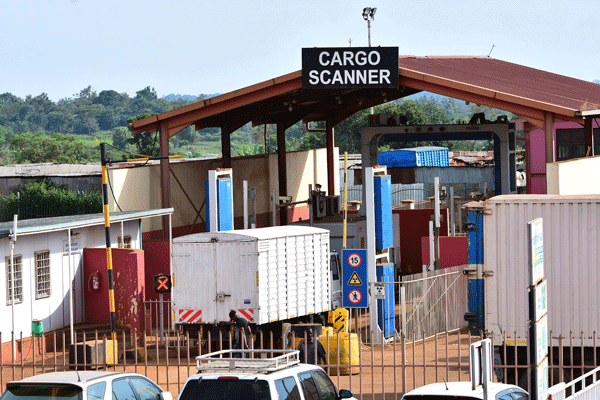Prime
About car alternators

What you need to know:
When a car fails to start, most motorists look at the battery paying little attention to the alternator, writes Joseph Kato.
Geoffrey Wanjala, a senior motor mechanic at Good Life Motor Garage on Namuwongo Road, says an alternator is a device in the engine system that charges the battery.
Although it is a simple element with a few parts, it plays a vital role in any vehicle’s operations.
An alternator turns the mechanical energy of the engine’s rotating crank shaft into electricity through induction.
Bruhan Mukisa, the director Banapo Auto Garage in Kansanga, a Kampala suburb, explains that wires within the alternator run through a magnetic field which induces electrical current.
This is what is used to power the car’s accessories, from the headlights to the battery. The alternator provides the power to start the car.
When your car alternator fails
Experts mention factors such as worn-out fan belt, damaged cutout, loose fan belt and water.
A fan belt is used to drive devices such as alternators, water pumps, air conditioning compressors and air pumps. A worn out fan belt will not fit in the alternator drive pulley, so it may not carry output of an alternator.
This would translate into a slip at the alternator, and heat transferred through the shaft to the bearing and other components.
Wanjala explains that a cutout is a coil of wire wound around a soft iron core and is therefore, an electromagnet. When the car is started, current from the dynamo will flow to the coil, magnetising the soft iron core.
When the current reaches a level superior than the inert battery volts; this reaches adequate strength to pull together a set of contacts that link the dynamo to the battery.
At this moment, the cutout ensures that current can only flow from the dynamo to the battery.
Here, the mechanic may test the charging system to see whether it is weak or not working at all by switching on the engine. It also helps to detect if one of the diodes inside the alternator has failed.
If the charging system failed the test, the mechanic will need to do further diagnostics to assess if it is the alternator causing the problem.
Additional charging system problems include a loose drive belt, faulty wiring or blown fuse and defective ignition switch.
Often an alternator can fail prematurely when a protective engine undercover or shield is damaged or missing. This happens because sand and water from the road can get inside the alternator and cause it to wear out faster.
If your engine undershield is damaged, make sure it is substituted to keep the engine compartment clean and dry.
A coolant or oil leak can also damage the alternator. Likewise, if you have to clean the engine compartment, the alternator must be protected from water and detergent.
Components of an alternator
Wanjala outlines some of commonly known alternator parts as brushes, stators, bearing and pulleys.
A distinctive alternating current alternator has two windings, for example stator which is stationary outside winding and a rotor that rotates inner winding.
A voltage supplied through the voltage regulator to the rotor winding rejuvenates the rotor and turns it into a magnet. The rotor is rotated by the engine via a drive belt.
The magnetic field produced by the rotating rotor prompts alternating current electric current in the stationary stator winding.
Diodes are used to convert alternating current into direct current used in the vehicle’s electric system.
The voltage produced is measured by the voltage regulator which is built-in the alternator.
One of the most crucial components of all the alternator parts is the cooling system which is crucial to the life and proper operation of the charging system.
The primary cause of alternator failure is the brushes. The brushes are the point of contact between the spinning stator assembly and the stationary rectifier.
This is also the gateway for the electricity produced by the alternator parts and the charging system. At some point replacing the brushes alone will rectify most alternator troubles.
Signs of failing alternator
Inexperienced drivers may not easily detect the problem; however, if one pays attention, diagnosing car trouble related to the alternator, can be easy.
One of the significant signs of a faulty alternator is failure to start. The car battery may produce bubbles. This usually happens when the battery is over charging, Wanjala explains.
The battery just permits a driver to get the car running. A faulty alternator will kill a good battery as it seeks for a source of energy.
“Another sign of a damaged alternator is not charging the battery thus making it not reserve power. Therefore, when your car does not start, it may be a result of an alternator or faulty battery,” Wanjala says.
Mukisa, on the other hand, cautions that when one experiences flickering headlights, stalling or strange noise when driving; it could be because of the failing alternator.
The most common alternator problems include worn-out carbon brushes, worn-out contact rings and a failed voltage regulator. Bad outer and inner alternator bearings can produce a whining noise. A warning light on the dashboard is a sign that the alternator needs replacement.
“One should never ignore such an indicator, even when he is not experiencing any other symptoms. One is advised to consult a reliable automotive professional for problem detection,” Mukisa says.
Dim headlights are a strong signal that your alternator may not be working correctly. The alternator provides power to the headlights, so the dim light means the alternator is stressed to execute.
When the alternator is faulty, other systems in a car powered by the alternator may act up.
These may include power windows, power locks, dashboard lights, air conditioning and car radio. Sometimes, alternator failure can cause some of the bearing to fail in the engine, creating unusual shakes.
“A bad alternator can cause the battery to drain because it is failing to recharge it. If your battery dies, have your alternator checked when replacing the battery so that it does not act up again,” says Wanjala.
The alternator provides power to the spark plugs that ignite the fuel in your engine. When the alternator is failing, there might not be enough power in the park plugs to keep the engine working which can cause it to stop for no reason while driving.
Cost of replacement
Wanjala says the cost of replacing an alternator depends on the type of vehicle. He advises drivers to go with a mechanic when buying a new alternator to avoid fakes.
One can keep the alternator safe by not allowing the fan belts to break. This, he says, can be achieved through tightening the fan belts, keeping it free from water and cleaning regularly.
Classification
Alternators can be classified depending on number of poles, based on rotor, output power, working principle, speed on rotation, coiling and construction.
Classification by number of poles include salient poles which have more than four poles and cylindrical that have two to four poles.
They can be classified basing on the rotor for instance, salient pole type and smooth cylindrical type.
Classification based on output power includes single and three phases, classification by working principle involves revolting armature type and revolting field type.
Alternators can be classified on the speed rotation such as turbo alternator and low speed alternator.
They can also be distinguished depending on coiling, for example, air and hydrogen cooling.




